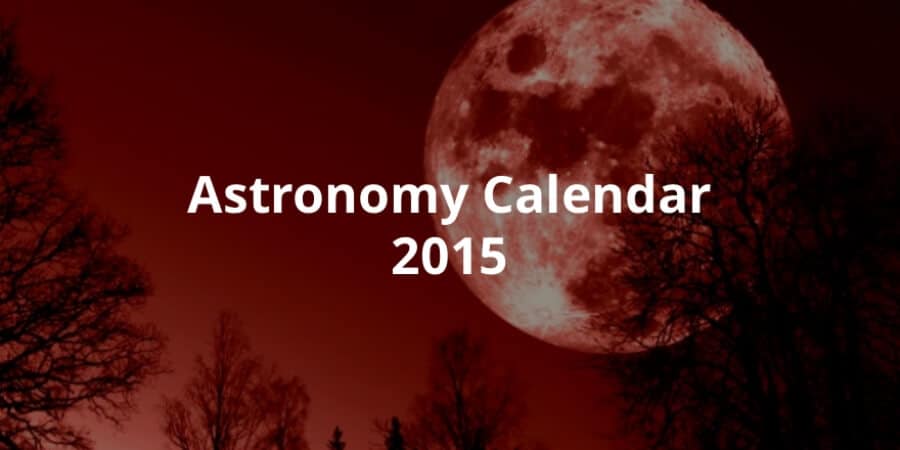Did you ever look in sky while it was meteor shower or Blood Moon? If not, this year you will have opportunity to see it in April, May, June, August, September and October!
Meteor showers
Meteor shower is considered as a “shooting stars” which streak through the sky at night. Why meteor? Meteor is a streak of light on the sky caused by small bits of interplanetary rock and debris called meteoroids vaporizing high in Earth’s upper atmosphere. When a meteor appears, it seems to “shoot” quickly across the sky, and because it is small and has intense brightness you might think it is a star. If you have luck to see where meteor hits, you will easy think you saw a star “fall.”
“Shooting stars” and “falling stars” have the same meaning – both describe meteors. Traveling at tens of thousands of miles an hour, meteoroids quickly ignite from the searing friction with the atmosphere, 30 to 80 miles above the ground. Almost all are destroyed in this process; the rare few that survive and hit the ground are known as meteorites.
When a meteor appears, it seems to “shoot” quickly across the sky, and its small size and intense brightness might make you think it is a star. If you’re lucky enough to spot a meteorite (a meteor that makes it all the way to the ground), and see where it hits, it’s easy to think you just saw a star “fall.”
Meteor shower Lyrdis is coming in approximately 2 weeks, on 22 and 23 of April. While this event you will need to have patience because experts expect to see fall of 20 meteors per hour. Incredible, but not that incredible like next meteor shower called Eta Aquarids expected in 5. and 6 of May when you will see three times more falling meteors – it is expected to fall 60 meteors per hour.
If you miss that also, there is the Perseid meteor shower in August 12. On that day you can see amazing 90 falls per hour! This event is considered as the best year shows of meteors thanks to the best grades. And, for the end of this year, in October 20.will be Orionid meteor shower. Actually, this meteor shower will be visible through whole month but in the night of 21.and the morning of 22 of October you will see 20 meteors falling per one hour – like in April. This meteor shower is made by rest of cosmic dust from comet Halley.
Meteor shower Lyrdis will be seen on Northern Hemisphere. It is interesting because crescent moon will go down after midnight and leave sky in total darkness and because of that this meteor shower you will see better. Unlike the meteor shower in April, in May the view will be better for people on Southern Hemisphere, but, even then, people still will have chance to look it late at night.
The radiant spot for the Leonid meteor shower is in the constellation Leo. The Perseid meteor shower is so named because meteors appear to fall from a point in the constellation Perseus.
If you have chance go on some valley or somewhere where your view will be good, bring chairs, food, blankets or make “picnic” and wait for meteor shower. Experience is fantastic, and starring at the stars and waiting for this miracle will make you feel incredible.
Elongation / Mercury and Venus
One more important event on the sky this year will be amazing elongation of Mercury and Venus in May and June. The angle between the Sun and the planet, when Earth is reference point is called elongation. When a planet is at its greatest elongation, it is farthest from the Sun, so its view is also best at that point. Planet’s greatest eastern elongation is near when an inferior planet is visible after sunset. And when an inferior planet is visible before sunset we are speaking about greatest western elongation. The value of the greatest Mercury’s elongation is between 18° and 28°, and for Venus is between 45° and 47°. Values are not the same all the time because the orbits of the planets are elliptical.
Another great happening will be in 7 of May with planet Mercury. Mercury will reach his Eastern elongation – he will be in position 21, 2° from the Sun. This is the best time in year to look at him. In June 6 Venus will reach her biggest Eastern elongation. That night she will reach position of 45,4° from the Sun and in this position it will be on highest spot up the horizon of night sky after sunset.
Blood moon
A couple days ago the world had opportunity to see total Blood moon. The first Blood moon eclipse happened in 2014 when it was 2 series of Blood moon. A few days before, on April 4 it happened third one – moon passed through planet’s shadow and got dark red color (bloody color), but you could see it only if you were in North Korea, South America, Eastern Asia or Australia. In astronomy term Blood Moon it was not used before last year, but now in media you can hear it everywhere.
But in August 29 we are waiting another blood moon / Supermoon. That means that moon is coming to position on totally opposite side of Earth, so his “face” will be totally lighted. Because of that he looks brighter than usual. A month after this event, on September 28 it will be total Lunar eclipse.
Support us!
All your donations will be used to pay the magazine’s journalists and to support the ongoing costs of maintaining the site.
Share this post
Interested in co-operating with us?
We are open to co-operation from writers and businesses alike. You can reach us on our email at [email protected]/[email protected] and we will get back to you as quick as we can.









